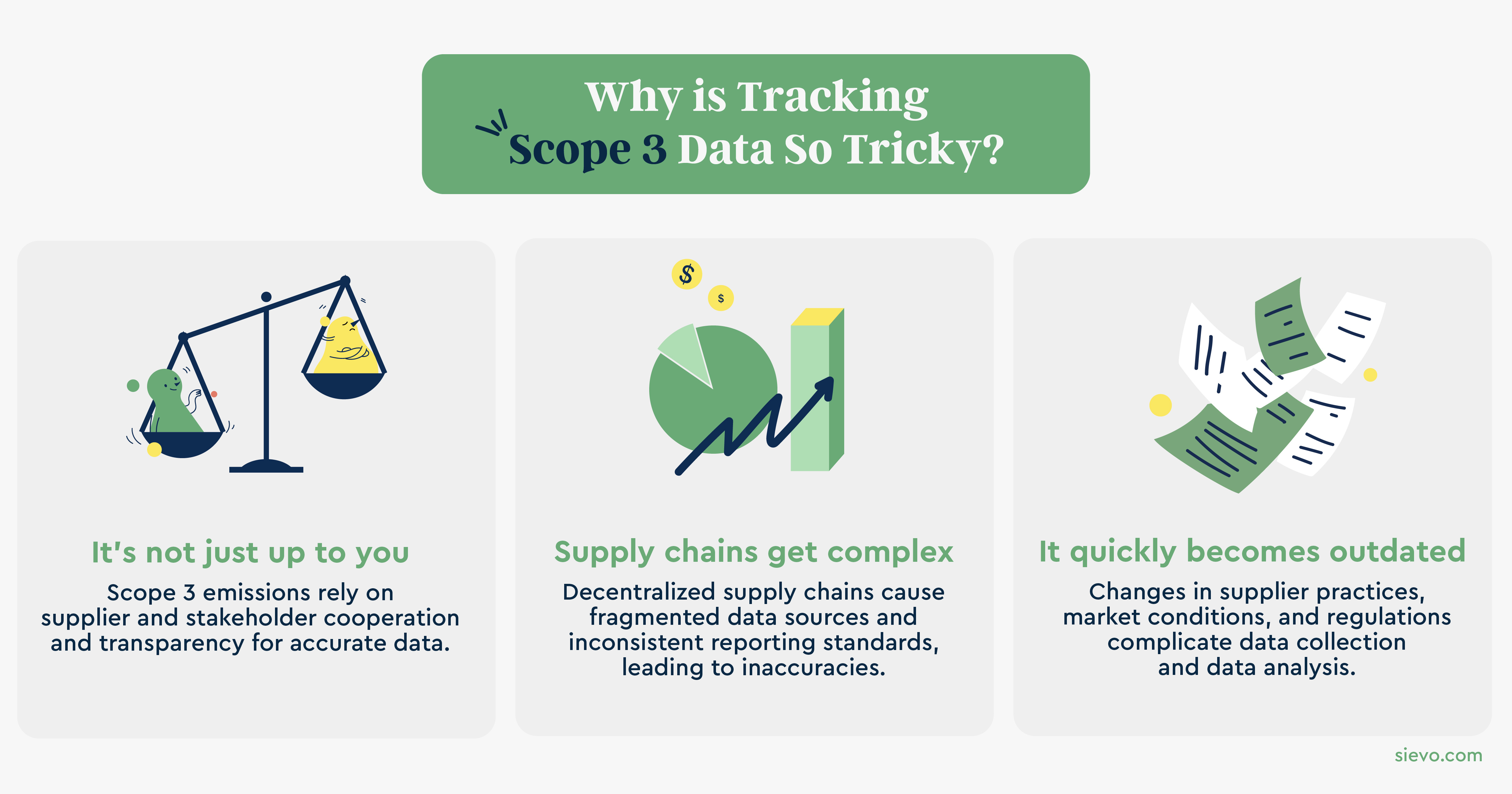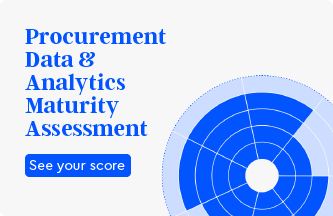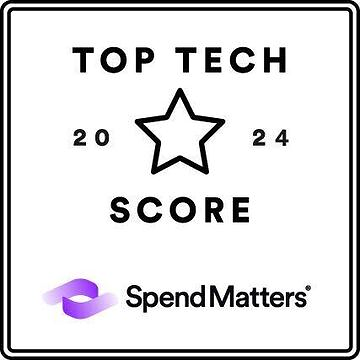With 80% of CO2 emissions lying in the supply chain, reducing Scope 3 emissions is an urgent race against time. Getting up to speed and delivering results relies on the quality and robustness of your emissions data.
For sustainability leaders, ensuring accurate data collection methods is not just a best practice – it's a cornerstone of an effective sustainability strategy.
Want to dig into sustainable procurement? Read our full guide to get started.
What is Scope 3?
Scope 3 emissions are a company's hidden carbon footprint. Scope 3 data encompasses indirect emissions associated with a company's value chain, including activities such as purchased goods and services, transportation, and waste disposal.

While Scope 1 and Scope 2 emissions are often easier to identify and control, Scope 3 emissions present a more complex challenge as they extend beyond a company's direct operations.
Scope 3 data challenges
While critical for understanding a company's full environmental impact, collecting accurate Scope 3 data comes with several challenges.

3 common challenges with Scope 3 data
- Dependency on stakeholders: Scope 3 emissions are often beyond a company's direct control, necessitating cooperation and transparency from suppliers and other stakeholders for data collection.
- Complexity of supply chains: The decentralized nature of supply chains can lead to fragmented data sources and inconsistencies in reporting standards, resulting in inaccuracies and data gaps.
- Dynamic nature of emissions data: Scope 3 emissions data can quickly become outdated due to changes in supplier practices, market conditions, and evolving regulatory requirements, adding complexity to data collection and analysis.
As a result, ensuring the reliability and relevance of Scope 3 emissions data requires ongoing diligence, collaboration, and investment in robust data collection and verification methods.
Learn more on how to tackle Scope 3 emissions!
Quality and reliability of Scope 3 data
Ensuring the quality and reliability of Scope 3 emissions data is critical for making informed decisions and effectively targeting suppliers for continuous emissions reduction efforts. Let us explain why.
Data-Driven Decision-Making
High-quality data serves as the foundation for strategic decision-making. Accurate Scope 3 emissions data enables businesses to identify hotspots within their supply chain, pinpointing areas where emissions are most significant.
With reliable data, companies can prioritize suppliers with the greatest emissions impact, ensuring that resources are directed towards initiatives that yield the highest carbon reduction outcomes.
Identifying High-Impact Suppliers
Not all suppliers have an equal environmental footprint. By analyzing emissions data, businesses can identify suppliers whose activities contribute disproportionately to overall emissions. This allows companies to focus their engagement efforts on suppliers with the greatest potential for emissions reductions, maximizing the efficiency and impact of decarbonization initiatives.
Setting Meaningful Targets
Effective target-setting requires a comprehensive understanding of emissions sources across the supply chain. High-quality data enables companies to set ambitious yet realistic emissions reduction targets that are aligned with their sustainability goals.
By basing targets on accurate emissions data, businesses can ensure that their objectives reflect the true scope of their environmental impact and drive meaningful progress toward sustainability.
Building Trust and Credibility
Transparent and reliable emissions data fosters trust among stakeholders, including investors, customers, and regulatory bodies. Demonstrating a commitment to data accuracy and integrity enhances credibility and strengthens the business case for sustainability initiatives.
It also provides assurance that emissions reduction efforts are based on sound evidence and rigorous analysis, bolstering the company's reputation as a responsible corporate citizen.
Discover how Deutsche Telekom mastered emissions with data!
Driving Continuous Improvement
Accurate emissions data serves as a benchmark for monitoring progress and evaluating the effectiveness of emissions reduction strategies over time. By tracking emissions performance against baseline data, companies can identify trends, assess the impact of interventions, and refine their approach to supply chain decarbonization. This iterative process of monitoring and improvement is essential for driving continuous progress toward sustainability goals.
Scope 3 Data Collection
Companies have various options for data collection methods, ranging from direct supplier reporting to third-party verification and independent audits. Each approach has its advantages and challenges, depending on factors such as supplier engagement, data availability, and resource constraints. Regardless of the method chosen, the key is to prioritize data accuracy, consistency, and transparency to ensure that emissions data serves as a reliable foundation for decision-making and action.
Sievo CO2 Analytics extracts directly from your ERPs, maps your spend data with emission data, and does the calculations for you. Sievo emission calculations are performed according to the Greenhouse Gas (GHG) protocol and verified by one of the big four accounting firms.

Why Spend Analytics Matter in Scope 3
Reducing Scope 3 emissions requires supply-based transparency and analytical excellence. Without reliable spend and volume data, it’s impossible to evaluate the real impact of purchased goods and services.
Gathering emission-related data from your suppliers and forming a timely, relevant view of your environmental footprint requires time and dedication. You could spend your time combining data from multiple sources month after month to track the current state and progress against targets, or you could partner with a CO2 analytics company and focus on strategy and execution instead.
Walk the Talk
Sievo CO2 Analytics solution sets you on the right track to Net Zero Emissions. The analytics provide a comprehensive view of your procurement contribution to total emissions.
Our advanced software tracks and analyzes spending across your supply chain, identifying key sources of emissions. AI-powered classification, personalized insights, and one-click actions allow you to address emissions hotspots with precision.
Supported by a classification coverage of 98% and the highest data accuracy of 94% on the market, Sievo empowers you to make green decisions. Choose Sievo to navigate the path to decarbonization and create a lasting positive impact.
Want to hear how to address the sustainability targets for your supply chain? Let’s discuss!




